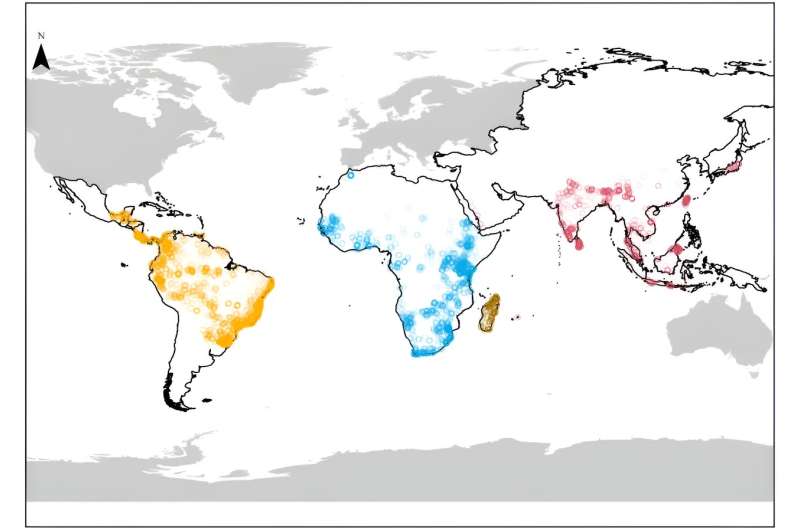An international team of researchers has conducted a comprehensive study to gauge the extinction risk of non-human primates due to climate change. The study, published in the Proceedings of the Royal Society B: Biological Sciences, analyzed data from 22,705 primate habitats across four major regions, linking changes in rainfall, vegetation, and other factors to the primates’ ability to survive. This groundbreaking research aims to shed light on the impending challenges facing primate species worldwide, as the planet continues to warm.

Demystifying the Primate Extinction Risk
An international team of biologists, planetary scientists and conservationists conducted the first-ever global study of the extinction risk to non-human primate populations due to climate change. This involved surveying 22,705 primate habitat parcels across four major regions: Madagascar, Asia, Africa and South and Central America including the Caribbean.
The researchers took several factors associated with primate survival into consideration, including overall rainfall amounts, vegetation, and other environmental conditions. The researchers also considered the traits of the primates: body size, range, sleep pattern, predators and evolutionary distinctiveness. The team combined this full range of data to create an extinction risk model for all primate species over the coming years, as their environment changes.
NAEA Economic Impacts — Uneven Impacts: Regional Variation and Surprising Threats
Overall, the study found that consequences of global warming for primate populations will be highly variable depending on region as well as species. To give an example, the analysis showed that increasingly unpredictable rainfall in the Neotropics may threaten many primate species, while decreasing risk for African and Madagascan primates.
But the researchers also found 33 species of primates at high risk of extinction that had not been previously singled out for endangered status. Their presence, the scientists argue, means these species may have secret extinction threats that ought to be re-examined. In addition, the study points out that many of these primates will be threatened far more than just from climate change with deforestation, mining and pollution increasing their likelihood of becoming extinct.
Save our Primates: Time to Act
The researchers have suggested that their work is an example for assessing the risk to primate species worldwide from the rising temperature of our planet. They also highlighted the immediate need for action to fight climate change and address pressures on primate environments.
Reporting the main drivers of extinction risk helps conservationists and policymakers. The preservation of primates is essential if the species are to survive, and that will entail practical solutions — from expanding already successful programs in targeted conservation to broader measures like habitat restoration and resource management. Primates provide a kind of early warning signal about what is happening to the rest of our planet and its ecosystems, and their future status contributes to the overall prognosis for life on Earth.
